Navigating dietary choices while undergoing orthodontic treatment like Invisalign requires careful consideration to ensure both oral health and treatment effectiveness.
A common query surrounds the compatibility of protein shakes with Invisalign aligners. Understanding the dynamics of consuming protein shakes during treatment is essential to maintain hygiene and prevent damage to aligners.
While protein shakes offer nutritional benefits, their consumption with Invisalign demands adherence to certain guidelines.
This introduction sets the stage for exploring the practicalities and precautions associated with enjoying protein shakes while wearing Invisalign aligners.
By addressing this topic, individuals undergoing orthodontic treatment can make informed decisions to support their overall health and treatment progress.
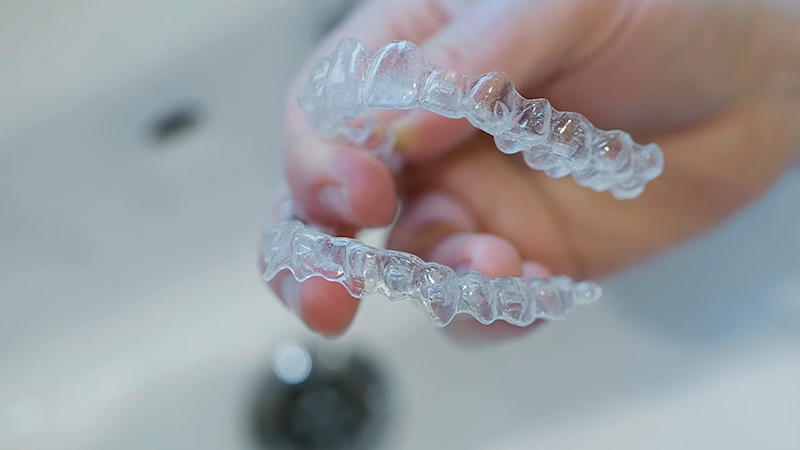
Can You Drink Protein Shakes With Invisalign?
Yes, you can drink protein shakes with invisalign. Drinking protein shakes while wearing Invisalign can be a bit tricky, but it’s definitely possible with some adjustments and precautions.
Invisalign aligners are designed to be removable, which makes it easier to eat and drink without causing damage to them.
However, there are still some things to consider when consuming beverages like protein shakes while undergoing Invisalign treatment.
Remove your aligners
Taking out your Invisalign aligners before consuming protein shakes is crucial to prevent any particles from getting trapped between the aligners and your teeth.
This step ensures that you can enjoy your shake without worrying about damaging your aligners or compromising your oral hygiene. Remember to store your aligners safely in their case while you enjoy your protein shake.
Rinse your mouth
After removing your aligners, it’s essential to rinse your mouth thoroughly with water. This step helps to remove any residue or debris left behind by the protein shake, ensuring that your teeth and gums remain clean and healthy.
Pay particular attention to areas where the aligners usually sit to ensure that no food particles are left behind.
Wait before putting your aligners back in
Giving your mouth some time to neutralize acids and restore its pH balance is essential before reinserting your Invisalign aligners.
Waiting at least 30 minutes after consuming anything other than water allows saliva to work its natural cleansing and protective properties.
This waiting period reduces the risk of enamel erosion and other potential issues associated with wearing aligners immediately after eating or drinking.
Clean your aligners
Before putting your Invisalign aligners back in your mouth, it’s essential to clean them thoroughly. Use a soft toothbrush and mild soap to gently brush the aligners, ensuring that any residue or buildup is removed.
Alternatively, you can use specialized Invisalign cleaning crystals or solutions recommended by your orthodontist.
Clean aligners not only ensure your comfort but also contribute to maintaining good oral health throughout your treatment.
Choose your protein shake wisely
When selecting a protein shake to enjoy while undergoing Invisalign treatment, consider factors such as color and sugar content.
Opt for clear or light-colored protein shakes to minimize the risk of staining or discoloration to your aligners. Additionally, choose protein shakes that are low in sugar to reduce the likelihood of tooth decay and other dental issues.
Reading ingredient labels and selecting shakes with minimal additives can help you enjoy your shake while minimizing any potential negative effects on your aligners and oral health.
Invisalign and It’s Limitations of Uses
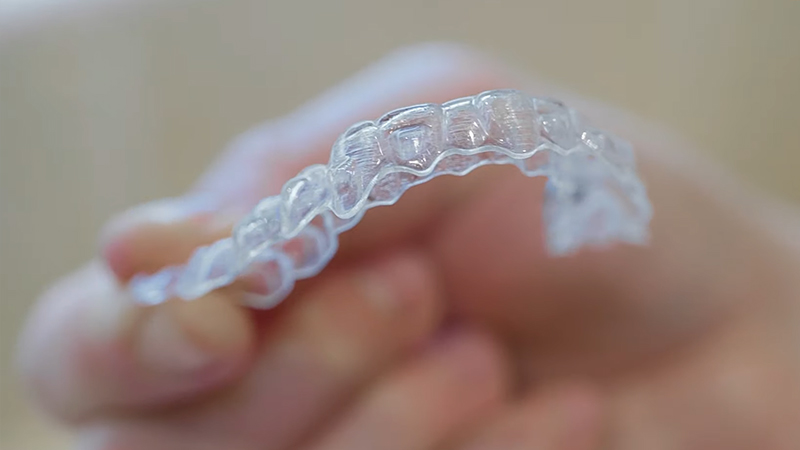
Invisalign has revolutionized orthodontic treatment by offering a more discreet and convenient alternative to traditional braces. However, like any orthodontic treatment, it does have its limitations.
Here’s an overview of Invisalign and its constraints:
Complex Cases
While Invisalign can effectively treat a wide range of orthodontic issues, including crowded teeth, gaps, overbites, underbites, and crossbites, it may not be suitable for extremely complex cases.
Severe malocclusions or misalignments may require more intensive orthodontic interventions such as traditional braces or surgical procedures.
Compliance
Invisalign treatment relies heavily on patient compliance. Aligners must be worn for 20 to 22 hours per day, removed only for eating, drinking (except for water), brushing, and flossing.
Patients who struggle to comply with wearing their aligners as directed may experience prolonged treatment times or suboptimal results.
Age Restrictions
While Invisalign is suitable for many teenagers and adults, it may not be recommended for young children whose mouths are still developing.
Orthodontic treatment decisions for children are best made in consultation with an orthodontist who can assess the child’s individual needs and determine the most appropriate course of action.
Certain Tooth Movements
Invisalign is exceptionally versatile and can achieve a wide range of tooth movements. However, there are some limitations to the types of movements it can effectively accomplish.
For example, highly complex rotations or vertical movements may be challenging to achieve with Invisalign alone.
Treatment Time
In some cases, traditional braces may be able to achieve results faster than Invisalign.
While the duration of treatment varies depending on individual factors such as the severity of the misalignment and patient compliance, some complex cases may require longer treatment times with Invisalign compared to traditional braces.
Cost
Invisalign treatment can be more expensive than traditional braces, depending on the individual case and the provider’s fees.
While many patients find the convenience and aesthetics of Invisalign worth the investment, cost may be a limiting factor for some individuals.
Orthodontic Needs Beyond Alignment
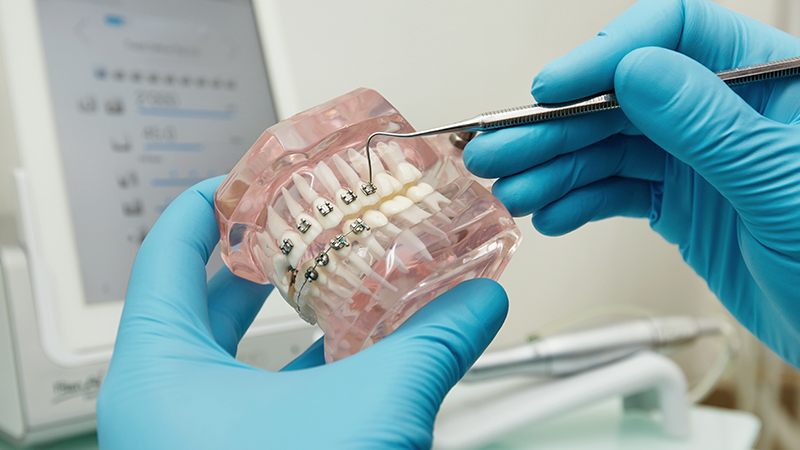
Invisalign primarily focuses on straightening teeth and correcting bite issues. However, some patients may have additional orthodontic needs, such as jaw alignment issues or significant skeletal discrepancies, that cannot be adequately addressed with Invisalign alone.
In such cases, a multidisciplinary approach involving other orthodontic or surgical interventions may be necessary.
How Invisalign Works
Invisalign offers a modern approach to orthodontic treatment, utilizing clear aligners to straighten teeth and correct various dental misalignments.
The process involves several key steps that work together to gradually shift the teeth into their desired positions:
Initial Consultation
The journey begins with an initial consultation with an Invisalign-trained orthodontist or dentist.
During this visit, the professional evaluates the patient’s oral health, discusses treatment goals, and determines if Invisalign is suitable for their specific needs.
Digital Scanning or Impressions
If deemed eligible for treatment, the patient’s teeth are digitally scanned or traditional impressions are taken to create a precise 3D model of the mouth. This model serves as the basis for designing the custom Invisalign treatment plan.
Treatment Planning
Using advanced computer software, the orthodontist maps out the step-by-step movements of the teeth throughout the treatment process.
This virtual treatment plan allows both the orthodontist and the patient to visualize the anticipated results before treatment begins.
Custom Aligner Fabrication
Based on the treatment plan, a series of custom-made aligners are fabricated specifically for the patient’s teeth.
Each aligner is designed to exert gentle pressure on the teeth, gradually guiding them into their desired positions over time.
Wearing the Aligners
Once the aligners are ready, the patient begins wearing them according to the prescribed schedule, typically for 20 to 22 hours per day. The aligners are removable, allowing for easy cleaning and maintenance of oral hygiene.
Progression and Aligner Changes
Every few weeks, the patient switches to a new set of aligners in the series. Each new set is slightly modified to continue the tooth movement process according to the treatment plan. Progress is monitored regularly by the orthodontist to ensure that the teeth are moving as planned.
Refinements and Finalization
In some cases, refinements may be necessary to fine-tune the results toward the end of treatment. Once the desired tooth positions are achieved, the patient transitions to wearing retainers to maintain the new alignment and prevent relapse.
Drinks and Foods to Avoid While Wearing Invisalign
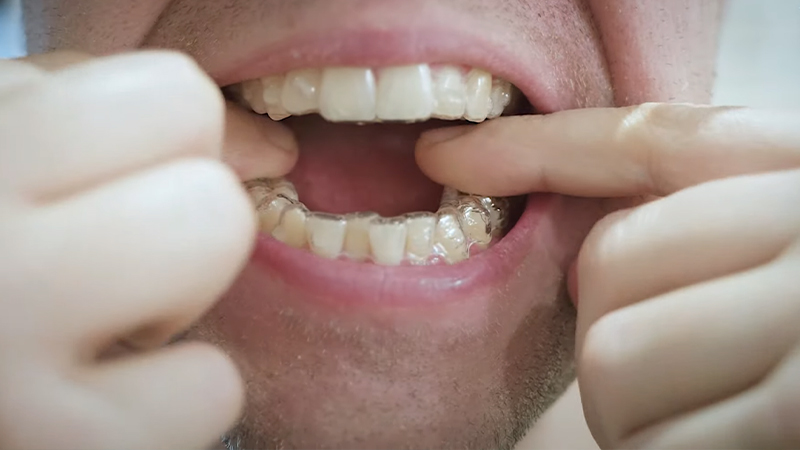
When undergoing Invisalign treatment, it’s essential to be mindful of your dietary choices to ensure the success of the treatment and maintain the integrity of the aligners.
Here’s a guide to drinks and foods to avoid while wearing Invisalign:
Sugary Drinks
Beverages high in sugar, such as soda, fruit juice, and energy drinks, should be avoided. Sugar can accumulate on the teeth and aligners, increasing the risk of cavities and staining. Opt for sugar-free alternatives or plain water instead.
Acidic Drinks
Acidic beverages like citrus juices, sports drinks, and some teas can erode tooth enamel over time. This erosion may weaken the teeth and make them more susceptible to decay. Limit consumption of acidic drinks and rinse your mouth with water afterward to help neutralize acids.
Hot Drinks
Hot beverages like coffee and tea can warp or deform the Invisalign aligners, affecting their fit and effectiveness. Additionally, hot drinks may cause discomfort or burning sensations while wearing the aligners.
If you enjoy hot beverages, remove your aligners before consuming them and wait until they cool down before reinserting them.
Staining Foods and Drinks
Foods and drinks that are known to stain teeth, such as red wine, curry, berries, and tomato-based sauces, can also stain Invisalign aligners.
To minimize staining, consume these items in moderation and brush your teeth or rinse your mouth with water afterward.
Hard or Sticky Foods
Hard or sticky foods like nuts, popcorn, chewing gum, and sticky candies can damage or dislodge the aligners. Avoid these foods to prevent them from getting stuck in the aligners or causing them to crack or break.
Alcoholic Beverages
Alcoholic beverages can dehydrate the mouth, leading to reduced saliva production. This dry environment increases the risk of bacterial growth and plaque accumulation, which can be problematic when wearing Invisalign aligners.
If you choose to consume alcohol, drink plenty of water to stay hydrated and maintain oral health.
Chewing Ice
Chewing on ice cubes can not only damage the aligners but also pose a risk to your teeth by potentially causing cracks or chips. Avoid chewing on ice while wearing Invisalign aligners to prevent any damage to your oral appliances or teeth.
Safe Drinks for Invisalign Users
For individuals undergoing Invisalign treatment, choosing the right drinks is crucial to maintain the effectiveness of the aligners and ensure optimal oral health.
Here’s a guide to safe drinks that are compatible with Invisalign:
Water
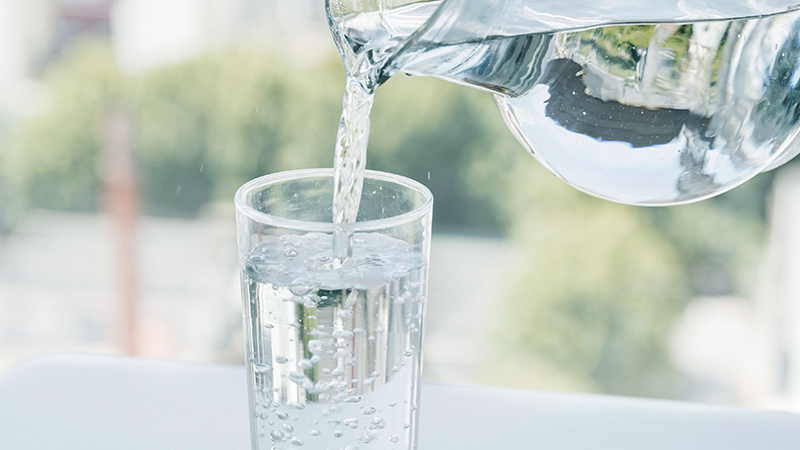
Water is the best beverage choice for Invisalign users. It’s hydrating, sugar-free, and helps rinse away food particles and bacteria from the mouth and aligners.
Drinking plenty of water throughout the day also helps keep the mouth moist and promotes saliva production, which is essential for oral health.
Plain Milk
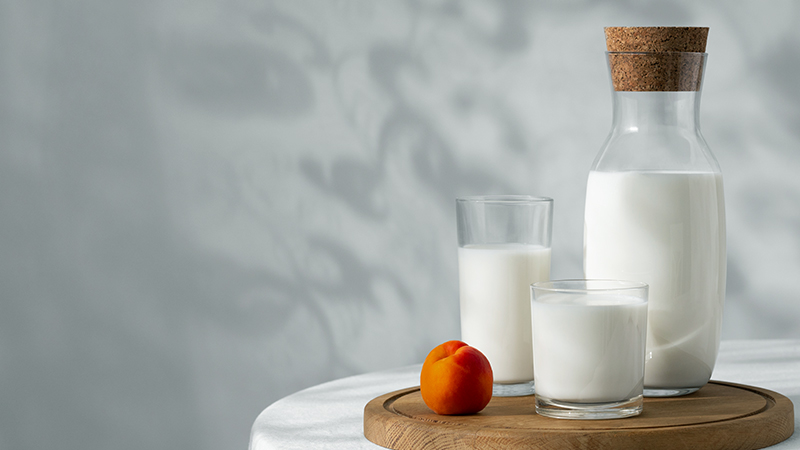
Plain milk is another safe option for Invisalign users. It provides essential nutrients like calcium and vitamin D for healthy teeth and bones without containing added sugars that can contribute to tooth decay. However, flavored milks with added sugars should be avoided.
Herbal Teas

Herbal teas, such as chamomile, peppermint, or ginger tea, are generally safe choices for Invisalign users.
These teas are caffeine-free and do not contain added sugars, making them gentle on the teeth and aligners. Just be cautious with herbal teas that are acidic or strongly pigmented, as they may stain the aligners over time.
Clear, Sugar-Free Beverages
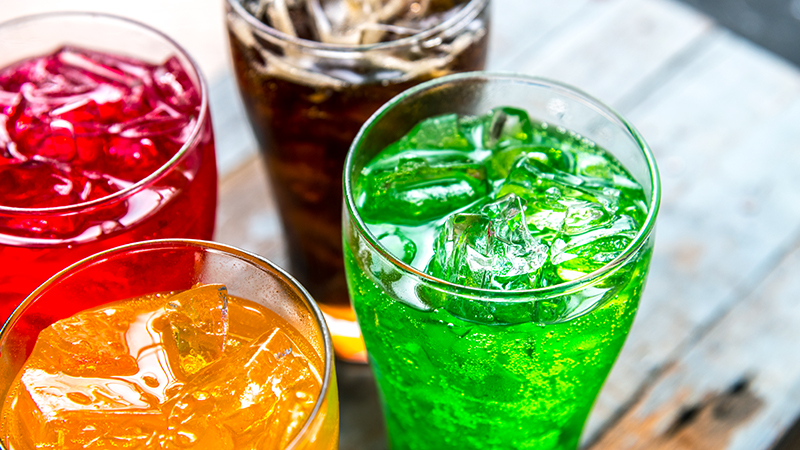
Clear, sugar-free beverages like sparkling water, club soda, and unsweetened iced tea can be enjoyed while wearing Invisalign aligners.
These beverages provide hydration without the risk of causing cavities or staining the aligners. However, be mindful of any acidic additives or carbonation that may affect the teeth or aligners.
Coconut Water
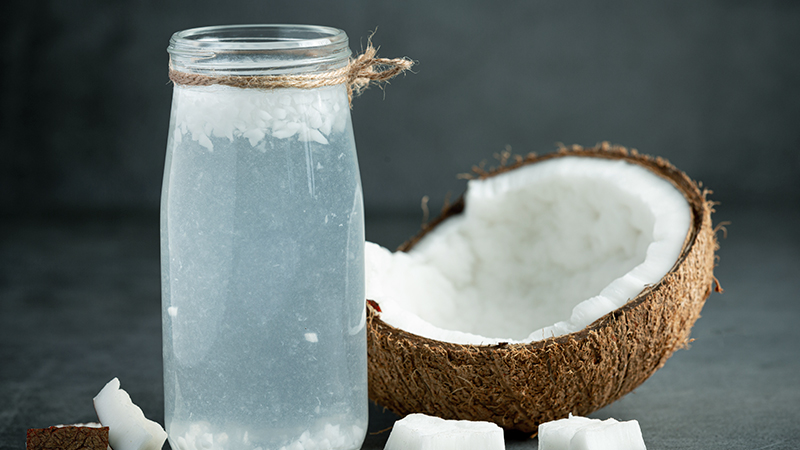
Coconut water is a natural and refreshing drink option that is low in calories and sugar. It also contains electrolytes, making it a hydrating choice for Invisalign users. Just be sure to choose plain coconut water without added sugars or flavors.
Vegetable Juices
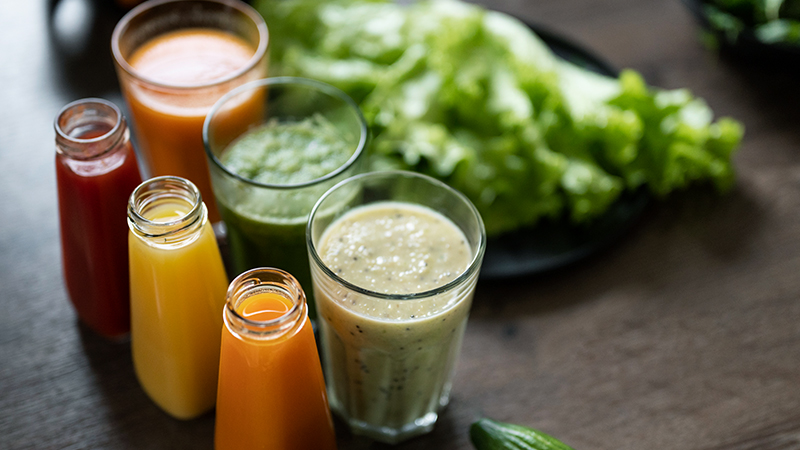
Freshly squeezed vegetable juices, such as carrot or celery juice, can be nutritious options for Invisalign users.
These juices are lower in sugar than fruit juices and contain vitamins and minerals that support overall health. However, be cautious with juices that are high in acidity or contain added sugars.
Protein Shakes (with Caution)
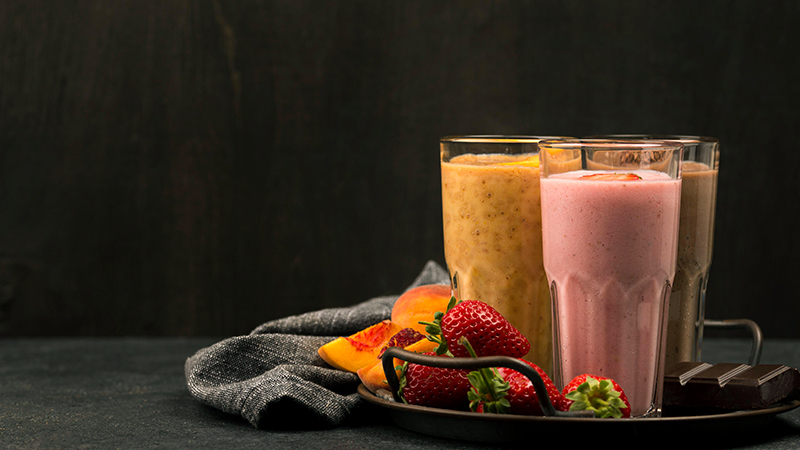
Protein shakes can be consumed with caution while wearing Invisalign aligners. Opt for clear or light-colored protein shakes that are low in sugar and avoid those with chunky or sticky additives that could damage the aligners.
Remember to remove the aligners before drinking the shake and clean them afterward to prevent residue buildup.
Practical Tips on Drinking With Invisalign
Drinking with Invisalign aligners requires some adjustments to ensure both comfort and effectiveness of treatment.
Here are some practical tips to make drinking with Invisalign a smooth experience:
Remove Aligners
Before consuming any beverage other than water, remove your Invisalign aligners. This prevents liquids from getting trapped between the aligners and your teeth, reducing the risk of bacterial growth and potential staining.
Stay Hydrated with Water
Water is the safest and most hydrating option while wearing Invisalign. Drink plenty of water throughout the day to maintain moisture in your mouth and support overall oral health.
Swish water around your mouth after drinking other beverages to help rinse away any residue before reinserting your aligners.
Timing Matters
Plan your drink consumption around your aligner schedule. Aim to finish your beverages within the designated time frame when your aligners are removed for meals and snacks.
This helps minimize the duration of exposure to sugary or acidic liquids, reducing the risk of tooth decay and aligner damage.
Avoid Sugary and Acidic Drinks
Sugary and acidic beverages can compromise oral health and stain your aligners. Limit consumption of sodas, fruit juices, energy drinks, and sports drinks. Opt for sugar-free and non-acidic alternatives whenever possible to protect your teeth and aligners.
Use a Straw (with Caution)
When drinking beverages that are not water, consider using a straw to minimize contact with your teeth and aligners.
However, be cautious with hot beverages and straws, as they can warp or deform the aligners. If using a straw, position it toward the back of your mouth to avoid direct contact with the aligners.
Clean Aligners and Teeth
After consuming any beverage, thoroughly clean your aligners and brush your teeth before reinserting them.
Use a soft-bristled toothbrush and non-abrasive toothpaste to gently brush your aligners, removing any residue or buildup. This helps maintain the clarity of your aligners and promotes oral hygiene.
Be Mindful of Temperature
Avoid consuming extremely hot or cold beverages while wearing Invisalign, as they can cause discomfort or damage to the aligners.
Allow hot drinks to cool slightly before drinking them, and be cautious with very cold beverages to prevent discomfort.
FAQs
Can You Drink Protein Shakes With Invisalign?
Yes, you can drink protein shakes with Invisalign, but it’s important to remove the aligners first to avoid damaging them or trapping residue between the aligners and your teeth.
Can protein shakes stain my Invisalign aligners?
Yes, protein shakes with dark or colorful ingredients can potentially stain Invisalign aligners if consumed while wearing them.
Can You Drink a Smoothie With Invisalign?
Yes, you can drink a smoothie with Invisalign, but be sure to remove the aligners beforehand and clean both your teeth and aligners afterward to maintain oral hygiene and prevent staining.
Wrap Up
Incorporating protein shakes into your diet while undergoing Invisalign treatment is feasible with proper care and precautions.
By following guidelines such as removing aligners before consumption, rinsing the mouth, waiting before reinserting aligners, cleaning aligners, and selecting appropriate shake options, individuals can enjoy the nutritional benefits of protein shakes without compromising their orthodontic progress.
While challenges such as maintaining compliance and avoiding potential staining exist, they can be managed with diligence and awareness.
Ultimately, consulting with your orthodontist and adhering to their recommendations ensures a smooth and successful journey with Invisalign, allowing you to maintain both your oral health and nutritional needs throughout treatment.
Hi, I’m Mark Pattinson and I’m a freelance personal trainer. I’ve been working in the fitness industry for over 10 years especially since I work with diabetes patients and I love helping people achieve their fitness goals. I believe that everyone can benefit from a good workout, and I’ll do everything to make sure you get the most out of your training.